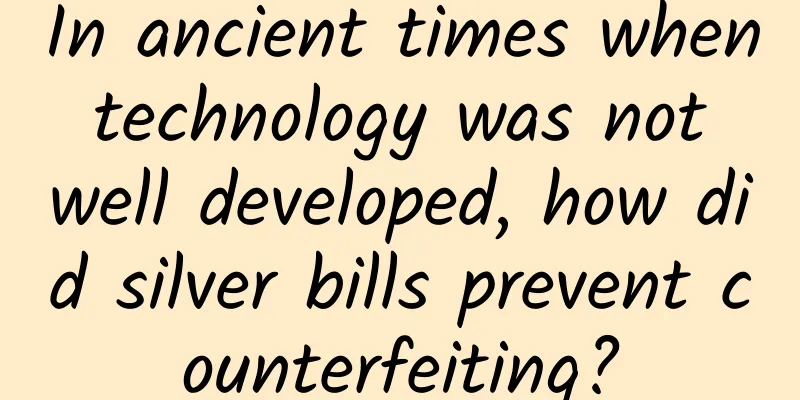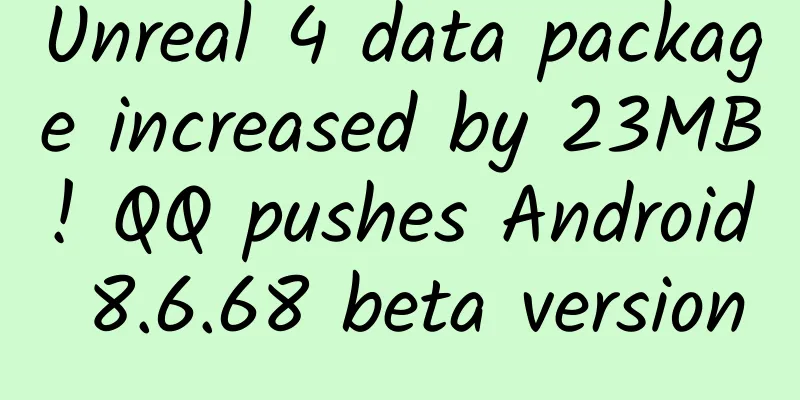In ancient times when technology was not well developed, how did silver bills prevent counterfeiting?

|
As we all know, although the silver note is just a thin piece of paper, it carries more than tens of millions of silver taels. How to ensure the safety and reliability of the silver note, and how to ensure that it can be exchanged and settled smoothly locally or in other places, is a top priority for the reputation and prestige of the bank. In ancient times when technology was not yet developed, anti-counterfeiting of silver bills was undoubtedly a difficult problem. However, the ancients had their own unique wisdom. They cleverly set up security through various means to discourage counterfeiters who wanted to take shortcuts. Today, we will take a look at the bills of exchange of the famous Shanxi Merchants’ Bank in the Qing Dynasty to explore how ancient silver bills were prevented from being counterfeited. Image above: A Dadexing remittance bill from the Qiao family during the Guangxu period, collected by the Shanxi Merchants Museum Handwriting + seal, anti-counterfeiting "hard line of defense" Today, companies and units have dedicated personnel responsible for filling out checks, receipts, and bills. This was also true in ancient times. Generally speaking, whether it was the head office or a branch, the person responsible for filling out the amount of the bill was relatively fixed. Therefore, the handwriting on the bill became an important means of anti-counterfeiting in ancient times. Every month, the Jinshang Piaohao regularly notifies each branch of the handwriting characteristics of the bill writer, so that everyone can identify the authenticity of the bill at a glance. If the writer changes, the head office and branch offices will immediately communicate with each other so that the recipient of the bill can grasp it in time to prevent errors. In ancient China, calligraphy often had a unique style for each person, and it was highly unique. Even if they learned from the same school, it was difficult to write every word the same. Some ticket numbers also stipulate that in addition to the fixed person writing the bill of exchange, the branch storekeeper must also sign each bill in person and is not allowed to sign on behalf of others. This increases the difficulty of forgery. In addition to handwriting, seals were also a common anti-counterfeiting method used by the ancients. Each banknote exchange of Shanxi merchants stamped a seal on the front of the bill. Not only did the patterns vary, but also various colors were used. While playing a role in distinguishing, it can also be used to identify the authenticity. In addition, some well-known banknote exchanges also use watermarks on the bills. This watermark is hidden in the paper and cannot be seen at ordinary times. It can only be found when it is erected and photographed. For example, the bill of exchange of Pingyao Weitaihou Banknote Exchange has the three words "Weitaihou" as the watermark. Generally, watermarks can only be printed by the head office and then distributed to each branch office to prevent piracy. In addition, if there is damage during distribution, the damaged banknote must be sent back to the head office before a new one can be received to prevent loss. Almost all the banknotes issued by various countries today use watermarks as one of the anti-counterfeiting measures, which shows that this technology has been widely recognized internationally. This is a great invention of our China, and its originator is the Shanxi Merchants Bank. Above: Shanxi merchants’ banknote seal Use a secret code to provide an extra layer of security After Emperor Daoguang and Emperor Xianfeng, as the national power declined, social credit also deteriorated, and counterfeit banknotes occurred frequently. The traditional anti-counterfeiting "two-piece set" of handwriting + watermark could no longer guarantee the safety of banknotes. For this reason, Shanxi merchants began to use secret seals as a third insurance besides handwriting and watermarks. The so-called secret seal means that the amount and issuance time of the bill are not filled in with numbers, but with Chinese characters as codes. Since the Chinese character codes of each bill number are different, this greatly improves the safety factor of the bill. In order to ensure that there is no risk of error, the bill number will be changed regularly, and the number corresponding to the code is often only known by the shopkeeper and the accountant, which effectively reduces the risk of the bill being forged. Let's take the code used by Rishengchang Bank as an example to explain how to use the secret seal. Among them, the ten numbers "壹贰叁肆伍六789拾" are replaced by "赵氏之離城璧,由來天下传" respectively; and the four digits "萬", "千", "佰", and "十" are replaced by "國", "寶", "流", and "通" respectively. Therefore, when you see a bill of exchange with "Zhao Guoshi Bao" written on it, people who understand will know that it is a bill of exchange issued by Rishengchang Bank for 12,000 taels of silver. But for those who don't understand the secret code, it's like reading a book in a foreign language. Image above_ 60 copper coins exchange voucher with the number 86 of Guangmao Yongji, Sanjiao Town, Lin County Precision in the law to eliminate loopholes Don't think that the three anti-counterfeiting methods of Shanxi merchants' bills of exchange are limited to the above three. In fact, the reason why the name of Shanxi merchants is well-known throughout the world is inseparable from the complete set of perfect management systems they have established. This system, which was praised by later generations as "the most precise law", is the key to ensuring that Shanxi merchants' bills of exchange can be circulated throughout the country. First of all, when it comes to the payment of bills of exchange, when the merchant arrives at the designated remittance branch at the agreed time, the branch will first conduct a bill collection and review. After the verification is correct, the word "useless" will be stamped on the bill and the amount will be blacked out with ink. After the exchange is completed, an exchange certificate will be issued, and the merchant and the branch storekeeper will each hold a copy and sign and seal. After checking again, the bill will be destroyed, and the exchange amount and certificate will be kept on file for future reference and recorded in the branch's running account. At that time, almost all major Shanxi merchants adopted the above method, so the physical bills handed down today are very rare. In addition, the bill of exchange can often be stamped with the seal of the head of the bill number on the amount or the name of the bill number according to the needs of the customer. When exchanging or settling, the branch responsible for withdrawing the money needs to stamp another seal next to the stamped seal, and at least 50% of its area must be stamped on the seal of the head of the bill number, so that the bill can be considered to have been exchanged. The above method seems cumbersome, but it undoubtedly greatly increases the difficulty of forgery. Image above: Rishengchang Bank was founded around 1823 (the third year of Emperor Daoguang’s reign) Thanks to the nearly perfect anti-counterfeiting techniques mentioned above, the bills of exchange issued by Shanxi Merchants' Exchange were as hard currency as real gold and silver in the country at that time, and their credibility was extremely high. Yang Yizeng, the governor of the grain transport system during the Daoguang reign, once said: "The silver banks in various provinces exchanged thousands of silver taels, but they only used a piece of paper as proof, which was a lie." He Changling, the governor of Jiangsu Province at about the same time, also said: "Today's exchange bills are easy to take and carry... There is no better way for both the people and the people than this." With the popularization of bills of exchange, a group of Shanxi merchants' bill shops, represented by Rishengchang, flourished and became famous all over the world, leaving a brilliant mark in the history of China's financial industry. Mr. Yu Qiuyu believes that Rishengchang Bill Shop can be called the "country grandfather" of contemporary my country's banking industry. |
>>: Taking a nap on the desk? Here’s how to sleep more comfortably than your deskmate!
Recommend
Is The Division shrinking or disconnecting? A full experience of The Division on PS4
When talking about Ubisoft, the first thing that ...
Apple applies for new patent: Future iPhone/Mac may be covered with titanium alloy
Isn't the aluminum body of the iPhone beautifu...
Still the familiar Xiaomi, Xiaomi 8 detailed review
Xiaomi officially released its 8th anniversary pr...
Explore the Xbox-related features on Win 10
As the previous generation of Windows operating s...
Super dry goods | How to successfully hold a press conference without any basic knowledge!
Planning to executing a press conference is a very...
Why are mosaics usually placed around the eyes? Is it difficult to identify if it is placed around the eyes?
You must have noticed that in some cases where yo...
As cars move towards the era of intelligent suspension, the world's first magnetorheological suspension modification brand, Mangri, is born
●Mangrui launches Ultra MagRheo, the world's ...
These 6 diseases sound scary, but they don’t need to be treated.
With the advancement of medical technology, we ar...
How effective is Momo advertising? Explanation of Momo advertising!
In the past two years, mobile Internet has been e...
How to effectively promote the product in the early stage?
"Successfully executing a plan that makes no...
【Smart Farmers】Traveling around the world: A “footprint map” of genetically modified crop cultivation
【Smart Farmers】Traveling around the world: A “foo...
"Mummy" plant? Let's see the 15 million-year-old Chinese jujube!
Author: Liu Yun, Wang Zixi, Tan Chao, Wang Guanqu...
How much do you know about illegal poachers who are hated by the whole world?
Let's first look at some data: In 2014, the p...
The 2022 Ig Nobel Prizes are announced! Two awards were won by Chinese teams
At 6 p.m. on September 15, Eastern Time, the 32nd...
National Hypertension Day | You must not know these 5 misunderstandings about lowering blood pressure
Hypertension is the most important risk factor fo...









